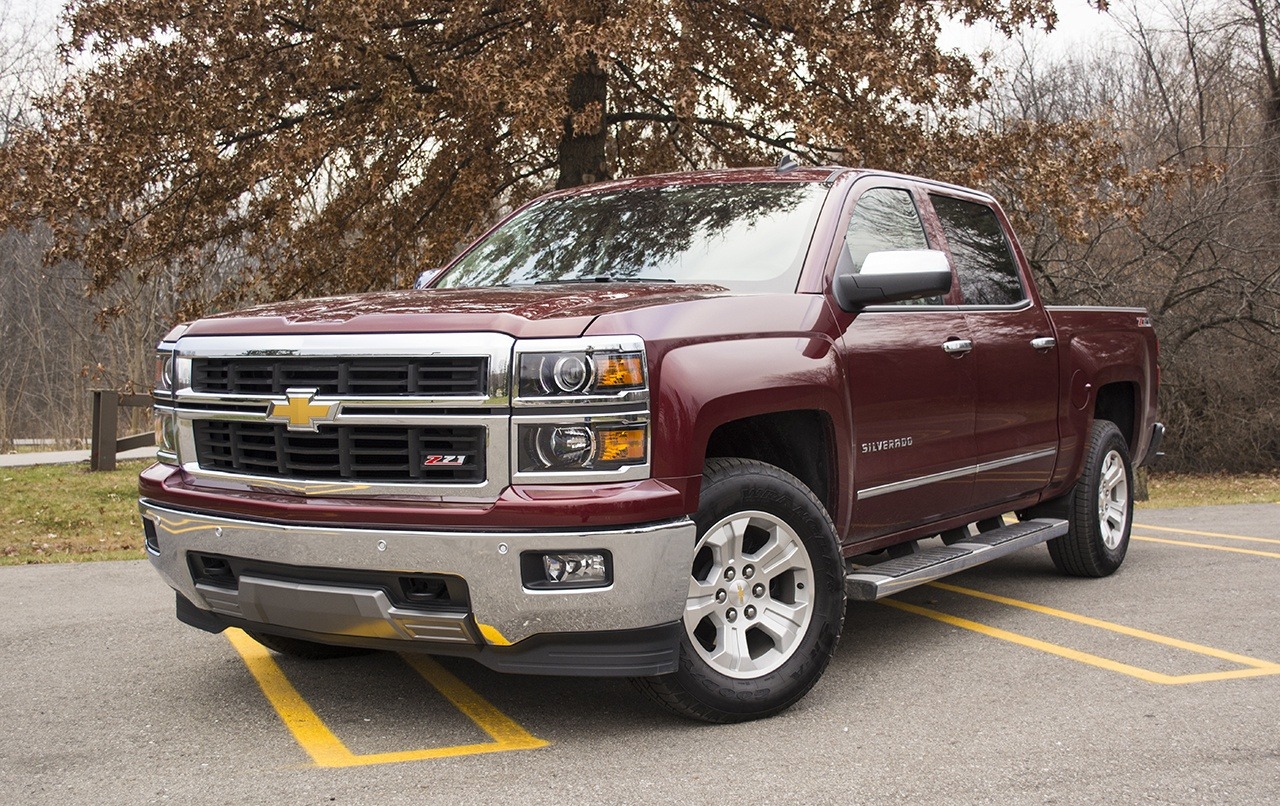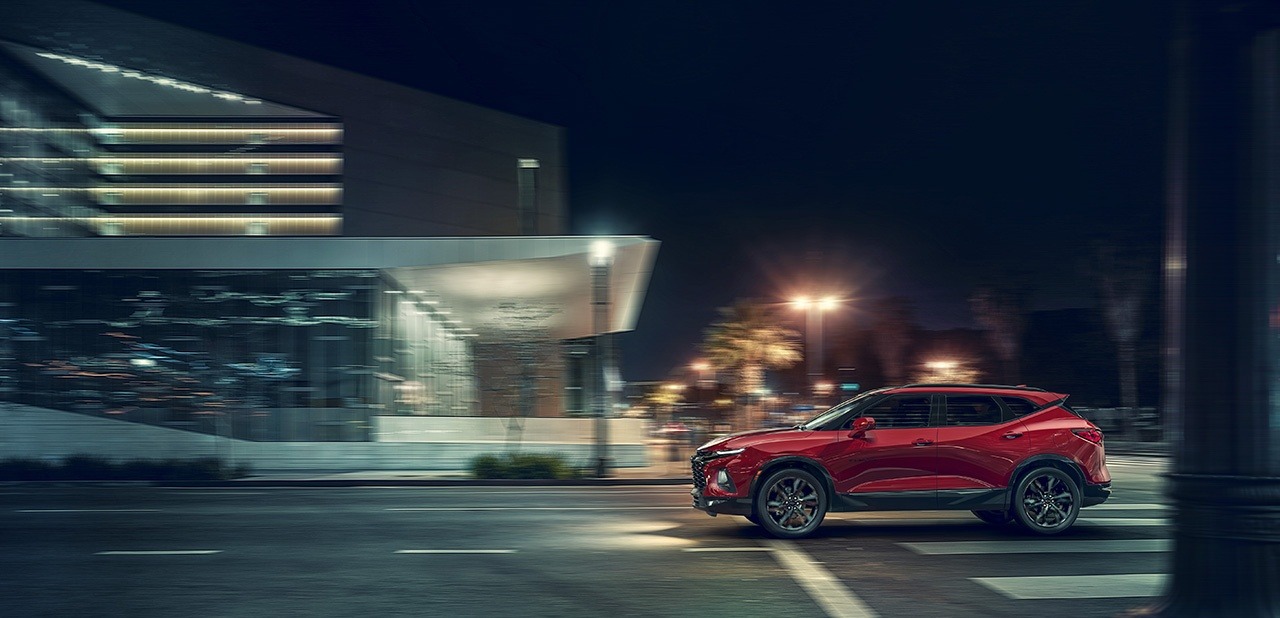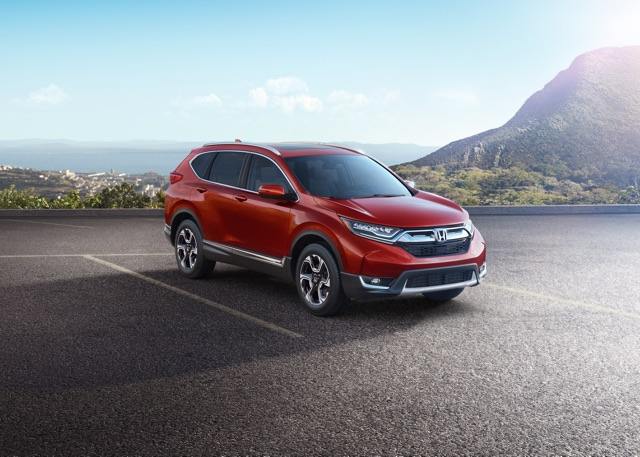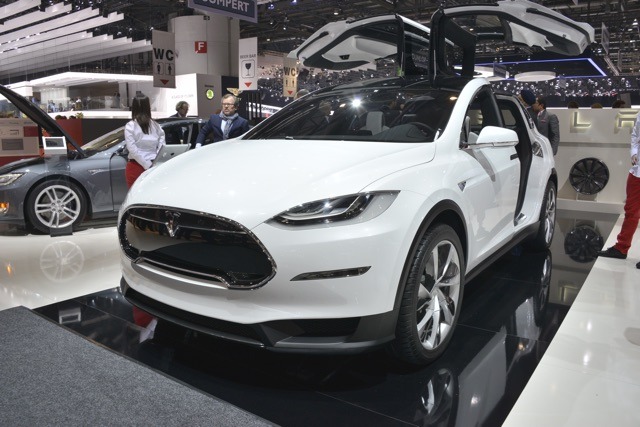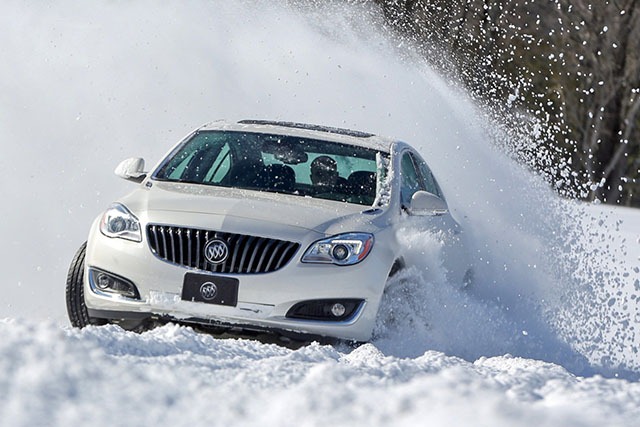Search the Community
Showing results for tags 'analysis'.
-
IHS Markit recently published their analysis on how long Americans are holding onto their vehicles. The average according to the firm stands at 11.9 years, the highest amount since they have been tracking this. Also, about one in four vehicles is over sixteen years old. We should note that this data came before COVID-19 started to wreak havoc on the U.S. IHS notes that new cars only made up 6.1 percent of vehicles in operation in 2019, down 0.8 percent when compared to high of 2016. This highlights falling new car sales. But the question lingering over automakers and analysts is will the pandemic cause sales to fall even further as more people hang on to their vehicles. "People are going to keep their vehicles because they don't know if they're going to be driving to work in the future, they don't know if they're going to be driving to work anytime soon even. If you're not accumulating the miles, you might keep that vehicle on the road a little longer," said Todd Campau, associate director of aftermarket solutions at IHS Markit. IHS estimates that new cars in operation could drop to 5% or less in the coming year or so. The firm also expects the age to climb upward in the coming years as owners consider whether or not to spend the hefty amount on a car, when their current vehicle is still quite good. Source: Automotive News (Subscription Required), CNBC
-
IHS Markit recently published their analysis on how long Americans are holding onto their vehicles. The average according to the firm stands at 11.9 years, the highest amount since they have been tracking this. Also, about one in four vehicles is over sixteen years old. We should note that this data came before COVID-19 started to wreak havoc on the U.S. IHS notes that new cars only made up 6.1 percent of vehicles in operation in 2019, down 0.8 percent when compared to high of 2016. This highlights falling new car sales. But the question lingering over automakers and analysts is will the pandemic cause sales to fall even further as more people hang on to their vehicles. "People are going to keep their vehicles because they don't know if they're going to be driving to work in the future, they don't know if they're going to be driving to work anytime soon even. If you're not accumulating the miles, you might keep that vehicle on the road a little longer," said Todd Campau, associate director of aftermarket solutions at IHS Markit. IHS estimates that new cars in operation could drop to 5% or less in the coming year or so. The firm also expects the age to climb upward in the coming years as owners consider whether or not to spend the hefty amount on a car, when their current vehicle is still quite good. Source: Automotive News (Subscription Required), CNBC View full article
-

Chevrolet's 2019 Blazer Might Not Be the Deal They Want You To Believe
William Maley posted an article in Chevrolet
Last month, Chevrolet announced the 2019 Blazer would begin at $29,995, undercutting the likes of Ford Edge and Nissan Murano. But Cars Direct has gone through the order guide and did some analysis. What they found out is that Blazer isn't as a good deal as Chevrolet is promoting to be. Let's start with the base the Blazer L which begins at $29,995. CarsDirect believes this model "is likely intended mainly for advertising purposes." This is something we saw before when Buick launched the Regal TourX. The L model is also excluded from factory discounts. Most buyers will likely be pushed towards the 1LT which begins at $33,495 - $1,700 more expensive than the Murano S and $2,505 more expensive than the Edge SE. Both the Murano and Edge pack more powerful engines (Blazer uses a 2.5L four-cylinder with 193 hp and 188 lb-ft of torque) and have the option of AWD. The Blazer can only get AWD on 2LT models and above. The 2LT begins at $34,495 and adds the 3.6L V6 engine - 305 horsepower and 269 pound-feet of torque. If you want AWD, be prepared to shell out an additional $2,700. Again, AWD is cheaper on the Murano ($1,600) and Edge ($1,950). Another disappointment for the Blazer is how much you need to shell out for advanced driver assistance features. If you want adaptive cruise control and front collision warning, then first you need pay $41,795 for the RS and then add $3,575 for Enhanced Convenience and Driver Confidence II Package. If you want automatic emergency braking, then you'll need to step up to the top-line Premier at $43,895 and add the Driver Confidence Package II for an additional $2,165. AEB is standard on the Murano and Edge. Based on this analysis, it does make the Blazer a bit of a tough sell. We'll have to see how things play out in the coming months. Source: CarsDirect- 50 comments
-
- 2019
- 2019 chevrolet blazer
-
(and 5 more)
Tagged with:
-
Last month, Chevrolet announced the 2019 Blazer would begin at $29,995, undercutting the likes of Ford Edge and Nissan Murano. But Cars Direct has gone through the order guide and did some analysis. What they found out is that Blazer isn't as a good deal as Chevrolet is promoting to be. Let's start with the base the Blazer L which begins at $29,995. CarsDirect believes this model "is likely intended mainly for advertising purposes." This is something we saw before when Buick launched the Regal TourX. The L model is also excluded from factory discounts. Most buyers will likely be pushed towards the 1LT which begins at $33,495 - $1,700 more expensive than the Murano S and $2,505 more expensive than the Edge SE. Both the Murano and Edge pack more powerful engines (Blazer uses a 2.5L four-cylinder with 193 hp and 188 lb-ft of torque) and have the option of AWD. The Blazer can only get AWD on 2LT models and above. The 2LT begins at $34,495 and adds the 3.6L V6 engine - 305 horsepower and 269 pound-feet of torque. If you want AWD, be prepared to shell out an additional $2,700. Again, AWD is cheaper on the Murano ($1,600) and Edge ($1,950). Another disappointment for the Blazer is how much you need to shell out for advanced driver assistance features. If you want adaptive cruise control and front collision warning, then first you need pay $41,795 for the RS and then add $3,575 for Enhanced Convenience and Driver Confidence II Package. If you want automatic emergency braking, then you'll need to step up to the top-line Premier at $43,895 and add the Driver Confidence Package II for an additional $2,165. AEB is standard on the Murano and Edge. Based on this analysis, it does make the Blazer a bit of a tough sell. We'll have to see how things play out in the coming months. Source: CarsDirect View full article
- 50 replies
-
- 1
-

-
- 2019
- 2019 chevrolet blazer
-
(and 5 more)
Tagged with:
-
Unless you have been living underneath a rock, then you know that the popularity of crossovers and SUVs have been booming. A new analysis reveals this popularity will not be going away anytime soon. IHS Markit looked at consumer loyalty rates for various body styles from 2012 to April 2017 and found that 66.2 percent owners of SUV and crossover models returned to buy another - the highest IHS has ever recorded. To give some perspective, pickups come second at 50.9 percent. "We collect this data and provide it to our clients once a month, but we felt that the results were so extraordinary in terms of consumer loyalty numbers for SUVs and CUVs that we wanted to publicly release it," said Tom Libby, manager of automotive loyalty and industry analysis at IHS Markit. More surprising is how much the loyalty rate for SUVs and crossovers has been rising since 2012. That year saw a loyalty rate of 52.9 percent. "While one can make the case that a factor is gas prices, there are some other key drivers to sport and crossover utility. One is wide range of selection in price and size of crossover vehicles. SUVs also have the appealing combination where the driver gets the comfort level of being in a car but also gets the versatility of being in a larger vehicle," Libby said. With one body style going up, one must go down. In this case, it happens to be the sedan. In 2012, loyalty for sedans stood at 56 percent. Since then, the rate has been dropping - stands at 49 percent through the first four months of this year. IHS Markit analysis revealed that in the first four months of 2017, two-thirds of sedan owners that bought a new vehicle chose an SUV/crossover. Those likely to switch from a sedan to an SUV/crossover are ones that have owned only one sedan. But don't expect sedans to go away anytime soon. "While loyalty in sedans has gone down, sedans aren't going away. Sedans still play a significant part in the market, and that's not going away anytime soon," said Libby. Source: Automotive News (Subscription Required) View full article
-

Loyalty for SUVs and Crossovers Hits A New High
William Maley posted an article in Automotive Industry
Unless you have been living underneath a rock, then you know that the popularity of crossovers and SUVs have been booming. A new analysis reveals this popularity will not be going away anytime soon. IHS Markit looked at consumer loyalty rates for various body styles from 2012 to April 2017 and found that 66.2 percent owners of SUV and crossover models returned to buy another - the highest IHS has ever recorded. To give some perspective, pickups come second at 50.9 percent. "We collect this data and provide it to our clients once a month, but we felt that the results were so extraordinary in terms of consumer loyalty numbers for SUVs and CUVs that we wanted to publicly release it," said Tom Libby, manager of automotive loyalty and industry analysis at IHS Markit. More surprising is how much the loyalty rate for SUVs and crossovers has been rising since 2012. That year saw a loyalty rate of 52.9 percent. "While one can make the case that a factor is gas prices, there are some other key drivers to sport and crossover utility. One is wide range of selection in price and size of crossover vehicles. SUVs also have the appealing combination where the driver gets the comfort level of being in a car but also gets the versatility of being in a larger vehicle," Libby said. With one body style going up, one must go down. In this case, it happens to be the sedan. In 2012, loyalty for sedans stood at 56 percent. Since then, the rate has been dropping - stands at 49 percent through the first four months of this year. IHS Markit analysis revealed that in the first four months of 2017, two-thirds of sedan owners that bought a new vehicle chose an SUV/crossover. Those likely to switch from a sedan to an SUV/crossover are ones that have owned only one sedan. But don't expect sedans to go away anytime soon. "While loyalty in sedans has gone down, sedans aren't going away. Sedans still play a significant part in the market, and that's not going away anytime soon," said Libby. Source: Automotive News (Subscription Required) -
Despite the hoopla and endless praise for Tesla and their vehicles, there are a number of owners who aren't happy with the company. Go on to any Tesla forum and you're bound to fin endless posts from owners of the Model X listing issues from poor paint quality to doors not closing. The Model S is no stranger to problems with batteries failing and the infotainment system freezing. This is a big issue for Tesla as they have been burning cash for the past two years, with a good amount of this cash coming going to repairs and warranty costs. CEO Elon Musk has promised investors to slow down the burn and curtail costs retaining to repairs. With Tesla announcing their results later today, we'll see if that promise was kept. But how much is Tesla spending when it comes to repairs? Reuters did some analysis on Tesla's recent annual report by looking at the total vehicles sold and total spending from warranty repairs and accruals - money set aside for future warranty work. Their analysis showed Tesla spent $1,043 per vehicle on repairs and set aside $2,036 per vehicle for future warranty work. The good news is these numbers are 17 and 34 percent lower than 2014. But compared to the likes of General Motors, Ford, and Daimler, Tesla's numbers are quite high. General Motors: $400 per vehicle on repairs, $332 for future work Ford: $429 per vehicle on repairs, $308 for future work Daimler: $970 per vehicle on repairs, $1,294 for future work It should be noted that Tesla only sold 50,000 vehicles last year, while GM, Ford, and Diamler sold millions. Nevertheless, spending just over $150 million of the total $700 million burnt for repair work isn't a good sign. Telsa in a statement to Reuters said it has reduced the cost of repair claims in the first year along with the amount it reserves for future repairs. Source: Reuters View full article
-
Despite the hoopla and endless praise for Tesla and their vehicles, there are a number of owners who aren't happy with the company. Go on to any Tesla forum and you're bound to fin endless posts from owners of the Model X listing issues from poor paint quality to doors not closing. The Model S is no stranger to problems with batteries failing and the infotainment system freezing. This is a big issue for Tesla as they have been burning cash for the past two years, with a good amount of this cash coming going to repairs and warranty costs. CEO Elon Musk has promised investors to slow down the burn and curtail costs retaining to repairs. With Tesla announcing their results later today, we'll see if that promise was kept. But how much is Tesla spending when it comes to repairs? Reuters did some analysis on Tesla's recent annual report by looking at the total vehicles sold and total spending from warranty repairs and accruals - money set aside for future warranty work. Their analysis showed Tesla spent $1,043 per vehicle on repairs and set aside $2,036 per vehicle for future warranty work. The good news is these numbers are 17 and 34 percent lower than 2014. But compared to the likes of General Motors, Ford, and Daimler, Tesla's numbers are quite high. General Motors: $400 per vehicle on repairs, $332 for future work Ford: $429 per vehicle on repairs, $308 for future work Daimler: $970 per vehicle on repairs, $1,294 for future work It should be noted that Tesla only sold 50,000 vehicles last year, while GM, Ford, and Diamler sold millions. Nevertheless, spending just over $150 million of the total $700 million burnt for repair work isn't a good sign. Telsa in a statement to Reuters said it has reduced the cost of repair claims in the first year along with the amount it reserves for future repairs. Source: Reuters
-
While Americans are keeping their cars longer (Experian Automotive says the average ownership length is now 7.75 years), there are some models that owners can't wait to get rid off within a year of buying. iSeeCars.com recently compared new car sales against used-car purchases in 2014 to figure out which vehicles were traded-in the fastest. Their analysis showed that on average, around 2.7 percent of all new vehicles are traded in after only a year’s ownership. More surprising was the vehicles that had the highest amount of trade-ins. The expectation would be that the vehicles with the highest amount of trade-ins would be cheap. Not so fast. iSeeCars.com in their analysis the vehicles with highest trade-ins range from $18,000 to $45,000. “iSeeCars.com analysts think the fact that consumers are giving more of these cars up than the average is directly linked to quality or perceived quality of the cars,” says Phong Ly, CEO of iSeeCars.com. “Because purchasing a new car is expensive and something most people tend to spend a lot of time on, it stands to reason they would make a change shortly afterward if they felt the quality was lacking.” Here's the list of the vehicles with the highest trade-in amounts, Buick Regal - 10.7 Percent Traded-In Chevrolet Sonic - 8.9 Percent Traded-In BMW X1 - 7.8 Percent Traded-In Dodge Charger - 7.7 Percent Traded-In Mercedes-Benz C-Class - 7.4 Percent Traded-In Chevrolet Cruze - 7.2 Percent Traded-In Nissan Frontier - 6.9 Percent Traded-In Source: Forbes
-
While Americans are keeping their cars longer (Experian Automotive says the average ownership length is now 7.75 years), there are some models that owners can't wait to get rid off within a year of buying. iSeeCars.com recently compared new car sales against used-car purchases in 2014 to figure out which vehicles were traded-in the fastest. Their analysis showed that on average, around 2.7 percent of all new vehicles are traded in after only a year’s ownership. More surprising was the vehicles that had the highest amount of trade-ins. The expectation would be that the vehicles with the highest amount of trade-ins would be cheap. Not so fast. iSeeCars.com in their analysis the vehicles with highest trade-ins range from $18,000 to $45,000. “iSeeCars.com analysts think the fact that consumers are giving more of these cars up than the average is directly linked to quality or perceived quality of the cars,” says Phong Ly, CEO of iSeeCars.com. “Because purchasing a new car is expensive and something most people tend to spend a lot of time on, it stands to reason they would make a change shortly afterward if they felt the quality was lacking.” Here's the list of the vehicles with the highest trade-in amounts, Buick Regal - 10.7 Percent Traded-In Chevrolet Sonic - 8.9 Percent Traded-In BMW X1 - 7.8 Percent Traded-In Dodge Charger - 7.7 Percent Traded-In Mercedes-Benz C-Class - 7.4 Percent Traded-In Chevrolet Cruze - 7.2 Percent Traded-In Nissan Frontier - 6.9 Percent Traded-In Source: Forbes View full article


